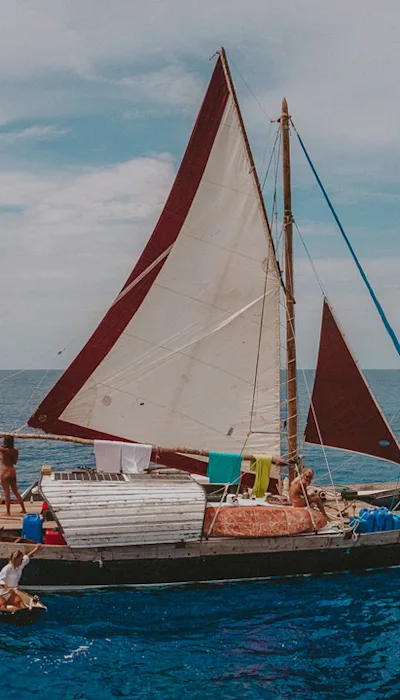In June 2022, Alizé Jireh and Lærke Heilmann were at Red Beard Farm in Wilmington, North Carolina buying 15 pounds of sweet potatoes, onions, tomatoes, and other sea-worthy produce. They even got to pull some vegetables straight from the earth, a memory that brought Heilmann comfort when cooking with them in a tight galley kitchen a month later, miles away from land, with nothing green in sight.
At the farm, Heilmann and Jireh were completing one task in a long line of chores to prepare for a voyage like neither had embarked on in their lives. Instead of taking the veggies home to a refrigerator, they brought them back to a 50-year-old catamaran called Mara Noka, and the boat's owner and captain, Kiana Weltzien. The three women had been living on the vessel for a month, preparing the ship—and themselves—to sail across the Atlantic Ocean from Beaufort, North Carolina, to Flores, Portugal for a project called Women and the Wind. But they had to wait for the right conditions.
When the right winds did strike, Weltzien, Heilmann, and Jireh planned to make the crossing in 30 days. They would document the journey in order to study and highlight plastic pollution throughout the Gulf Stream and to inspire others, especially women, to undertake momentous journeys of their own.




















